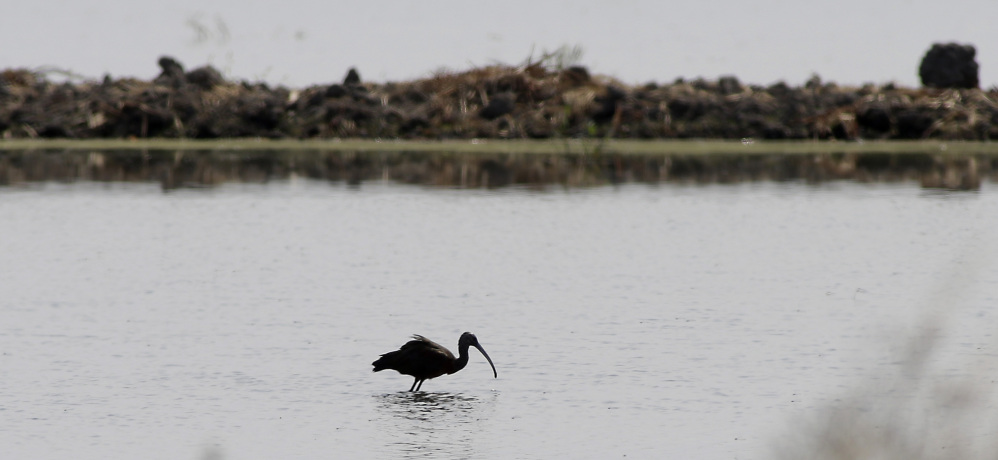YUBA CITY, Calif. — For the swirling flock of migrating shorebirds banking to a landing in California’s Central Valley, a recently flooded rice field is providing a new kind of triage station during a drought that’s drastically reducing places where they can rest on their long journeys.
The new arrivals to the field – hundreds of them – are dowichers, says conservationist Greg Gulot, standing on a dirt berm and focusing his binoculars to identify a wading bird that is one of the first to fly south in an annual migration that brings 350 species to California’s Sacramento and San Joaquin valleys.
With millions of birds on their way from the Arctic and subarctic and the drought cutting critical wetlands to as little as one-sixth, the field is one of the first to come on line this fall under a new program of “pop-up” habitats.
Conservationists are temporarily renting 14,000 acres from rice farmers and flooding them just long enough to give the migrating birds the rest and food they need to survive their flights.
Within hours of workers flooding the field two weeks earlier, hundreds of migrating birds appeared.
“It was incredible,” says biologist Simon Avery, a field monitor for the Nature Conservancy, which conceived and operates the pop-up rented wetlands, first tested last spring. “The birds are flying high over our heads, and they see water and come down.”
With severe drought covering 95 percent of California, pop-up wetlands are one of the few tools that conservationists and others have to help stave off what wildlife refuge managers are warning could be major bird die-offs this fall and spring as waterfowl and shorebirds crowd too few acres of wetlands.
Without the pop-up habitat, “it’d be impossible” to provide significant replacement for the hundreds of thousands of wetlands that drought has taken off-line, says Gulot, who shouts back and forth with Avery as they spot clusters of birds. “We would feel helpless. There’s just no way.”
The flocks wheeling into the pop-up wetlands mark one of the few bright spots for wildlife in the state this fall. A lush, wet winter in Canada and Alaska made prime breeding conditions for birds, meaning more birds than usual are coming to California wetlands.
At the Central Valley’s Grassland ecological area – a mix of state, federal and duck-club preserves that together make up one of the largest continuous wetlands in the contiguous U.S. – manager Ric Ortega has been able to flood just 5,000 of the 30,000 acres he would normally have under water this time of year.
Tens of thousands of birds already are crowding into that patch, making disease outbreaks in stagnant, packed water a major worry.
Water cutbacks mean his wetlands have received no water deliveries this calendar year, and Ortega is hoping to avoid the kind of botulism outbreak that already has killed at least 5,000 ducks at Tule Lake National Wildlife Refuge in northern California.
At the San Luis National Wildlife Refuge near Los Banos, the water shortage means refuge manager Kim Forrest was unable to irrigate this year, so birds will find less swamp timothy, millet and other grasses to feed on.
Normally, the state’s rice farmers would have 250,000 to 300,000 acres flooded in winter; this winter, it may be as little as 50,000, said Paul Butner of the California Rice Commission.
Send questions/comments to the editors.



Success. Please wait for the page to reload. If the page does not reload within 5 seconds, please refresh the page.
Enter your email and password to access comments.
Hi, to comment on stories you must . This profile is in addition to your subscription and website login.
Already have a commenting profile? .
Invalid username/password.
Please check your email to confirm and complete your registration.
Only subscribers are eligible to post comments. Please subscribe or login first for digital access. Here’s why.
Use the form below to reset your password. When you've submitted your account email, we will send an email with a reset code.